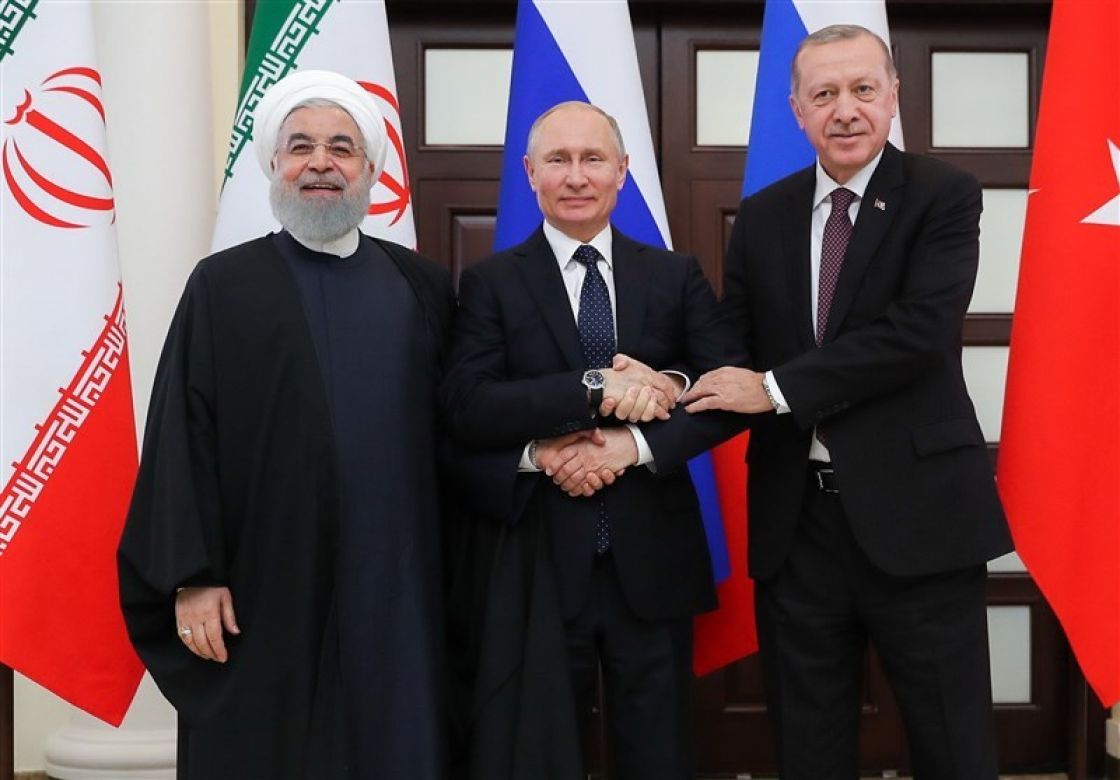- Articles
- Posted
Three Years Since the Astana Talks Started… Where is it Now?
Three years ago, more specifically the 23rd and 24th of January 2017, the first meeting of the Astana talks took place in the Kazakh capital, sponsored by each of Russia, Turkey, and Iran.
The 14th round of the Astana talks took place on the 11th of last December; this means, on average, one meeting took place every two and a half months. Naturally, this numeric indicator by itself is not enough to understand the meaning and magnitude of this format; nevertheless, it represents an important indication of the diplomatic activity and high dynamicity thereof. Added to that are the five summit meetings between the presidents of the three countries during the same period, and at least double that number of tripartite meetings at the level of the foreign and defense ministers.
In the Beginning, it was Syria
Looking back at the plethora of political analyses and interpretations that accompanied the launch of the Astana track provides an insight into the delusions within which the forces of the old political space blundered at the local, regional, and international levels. There was somewhat of a consensus that the format is doomed to failure, and it is only a temporary tactical convergence of antipodes that cannot be unified. Particularly, there was talk about Turkey's position within this trio, a position that some dealt with within the context of its alignment in the Western bloc as a reality that cannot change, even though nothing in the universe is “unchangeable”.
The aforementioned naive engagement put those forces in a series of floundering positions, ranging from continuously attacking the tripartite format – directly or indirectly, to supporting some of its outcomes selectively and out of a sense of necessity, at times after it was too late.
The above referenced shortsighted view prevented many from understanding the deep meaning of this format, as pondering it remained for a long time limited to the Syrian issue, at times even within small and partial aspects thereof.
Even if it were initially about Syria, when it comes to the work of the Astana trio, any objective observer of the magnitude of the enormous development founded on the frequent and tangible cooperation in the Syrian issue, can clearly see that said format – although it originated on the basis of addressing one concrete issue, that being the Syria issue – gradually expanded to become a strategic partnership among three countries. Said partnership does not only include one regional issue, but a set of issues along North Africa (for example, Libya), and western and central Asia.
A New Regional System
The root of the issue, which Kassioun has repeatedly noted, is that the new international balance is not merely related to a simple repositioning of local, regional, and international forces and structures, but more importantly, is the reshaping of those structures.
In other words, the Astana track formed in its essence the first manifestation of the new regional systems within a world of post American unipolarism, and has provided a prototype for the redrawing and rearranging of the various regional systems that were part of the ancient world.
What Has it Accomplished for Syria?
If we want to summarize what the Astana format has accomplished thus far in the Syrian issue, we can list the following basic aspects:
- Shrinking the war boundaries in the Syrian territories to limited areas, after they had included the entire country, which was a necessary starting point to open the door to implementing the political solution.
- Putting an end to Western manipulation of the issue of Sunni-Shiite fissure in the region, which was the most effective tool in sabotaging the region; this manipulation has not completely ended, but it can be confidently said that with respect to Syria, this secondary contradiction is no longer able to cause an explosion.
- Likewise, with the nationalist contradictions in the region, although there is still a lot to be resolved and dealt with, the format itself – the Astana format – has become an imperative passage for laying the ground for a comprehensive solution to nationalist problems, not only in Syria, but in the region as a whole
- Contributing UNSC resolution 2254 as the core and roadmap of the solution, by restricting Western manipulation of the process, whether directly through the small group or indirectly through hardliners within the regime and the opposition.
- Producing the Syrian Constitutional Committee and insisting to ensure it succeeds despite all the obstacles placed in the path of its work.
What Future Awaits It?
The increasingly flourishing bilateral and tripartite relations within the Astana trio, and in various fields – political, military, economic, and others – allow for predicting that this format has crossed the point of no return with important strides. This format has become a strategic relationship and a basis in shaping the new look of the region, which completion thereof not only requires solving the Syrian crisis as an indispensable condition, but also bringing closer the points of view with the main Arab powers, to achieve helping them to objective and inevitable shifting away from the Americans and their bullying. This test for the Astana format will be one of its hardest, and perhaps one that requires the most patience and wisdom, but it is also the final test that will ensure success in opening the doors to a prosperous life for the peoples and countries of the region after centuries of darkness.



 Imad Tahhan
Imad Tahhan